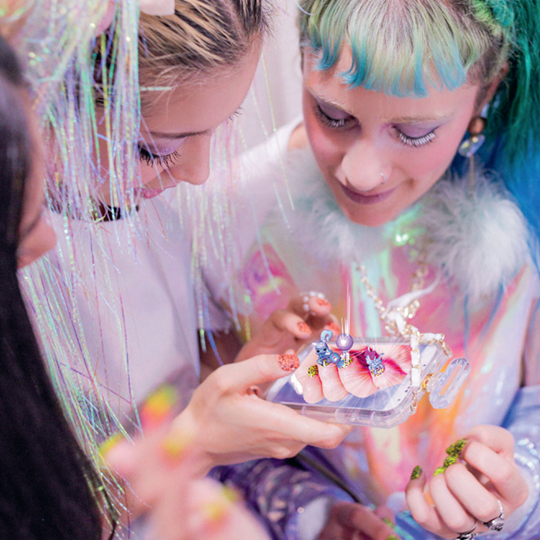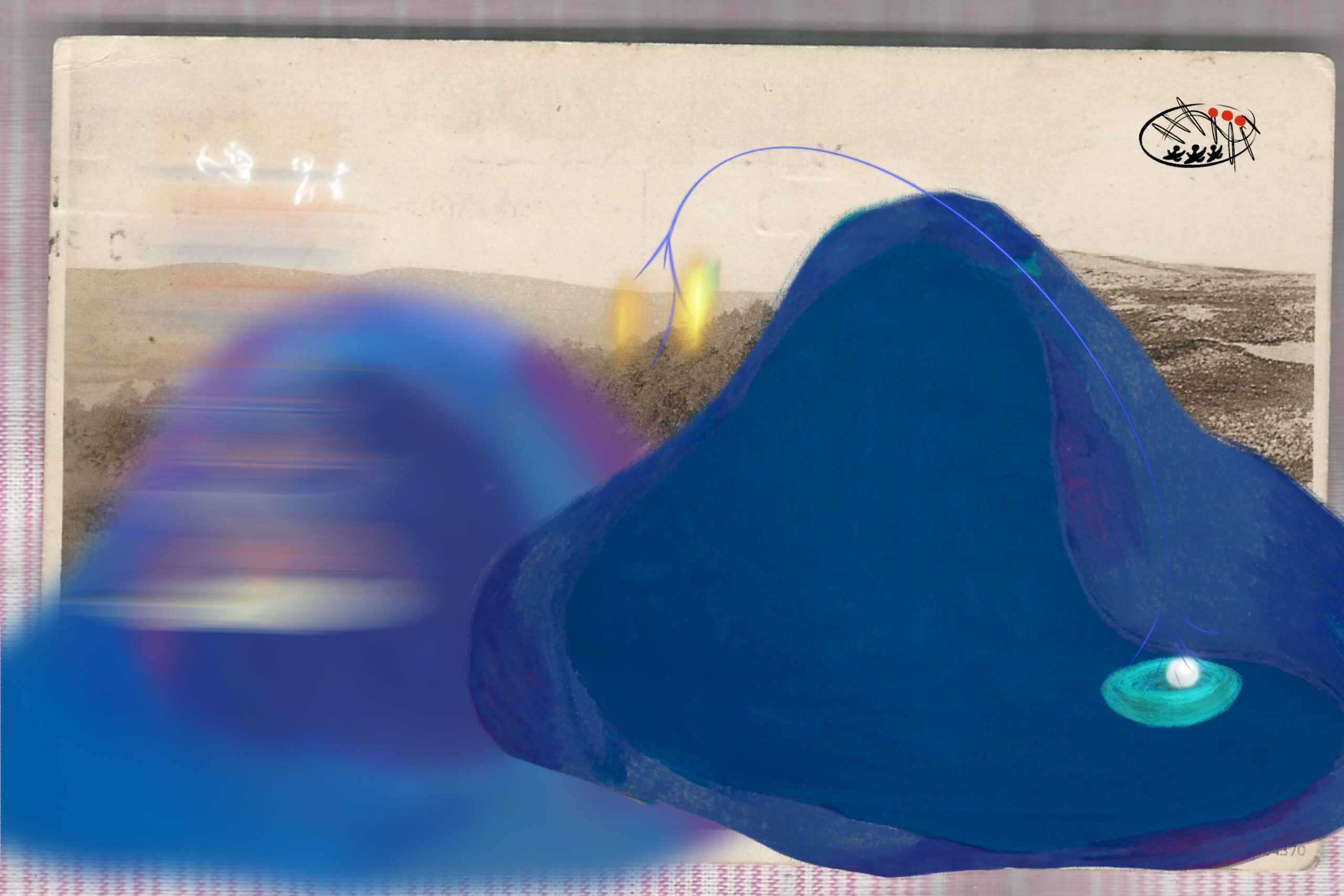NAILS
| July 16, 2015 | Post In 2015年6月号

Nail art has a long history in China. As early as 3000 BCE, royals combined gum arabic, gelatin, beeswax, egg whites, and crushed flower petals to lacquer their digits—so it’s fitting that two new projects innovating the medium have sprung up here.
Beijing artist Ye Funa’s “Curated Nails” is an ongoing platform considering the nail as an exhibition space, inviting submissions from artists and the public. At recent events staged at the Ullens Center for Contemporary Art and the Art Museum of Nanjing University of the Arts, the project has showcased over 100 contributions, often outrageously three-dimensional. Miniature objects like teacups and dolls, fake grass and trees, crying eyeballs, and real bird feathers have all been applied as unwieldy manicures, as well as more subtle interventions like disguising fingernails as toenails (by Gu Ling) and a performative homage to Santiago Serra’s 250 cm line tattooed on 6 paid people (by Qian Fan).
“Curated Nails” has also featured crossovers with Metaverse Nails, the augmented reality manicure brand based in Shanghai. Founded by Thea Mai Baumann, an Australian artist and digital designer turned fashion entrepreneur, Metaverse Nails are one of the first “appcessories” to go to market. The physical product is essentially a kit of press-on nails patterned with zebra stripes or cartoon patterns. But, when viewed through a mobile app, a proprietary glyph allows digital content to be applied to and customized on each nail. The possibilities are endless: dancing unicorns, singing pop stars, and your best friends’ faces can all be displayed on your nails. Metaverse also invites artists like Miao Ying to create virtual designs for their ecosystem.
These kindred projects ref lect the global rise of nail art as a mode of selfexpression and an extremely lucrative market (valued at USD one billion per year in the United States alone). They highlight the dichotomies of the decorated nail: an “affordable luxury” (as a New York Times exposé of labor conditions in American nail salons recently put it) that still soars during recessions (what was once called the Lipstick Effect, describing an increase in sales despite economic downturns, is now applied to nail polish). Nails are both tiny and magnified, especially when we are constantly staring at a smartphone screen framed by our fingers. They point to the inherent transmedia nature of “vanity capital” in this new age—a part of the physical body that belongs almost immediately a disembodied digital image shared on social media. Nails occupy a liminal space between “organic body” and “inorganic tool,” as noted by critic Kerry Doran, particularly as our fingers have become styluses for the touchscreens we operate. Nail art may then be a non-threatening way to experience the fusion of body with screen.


